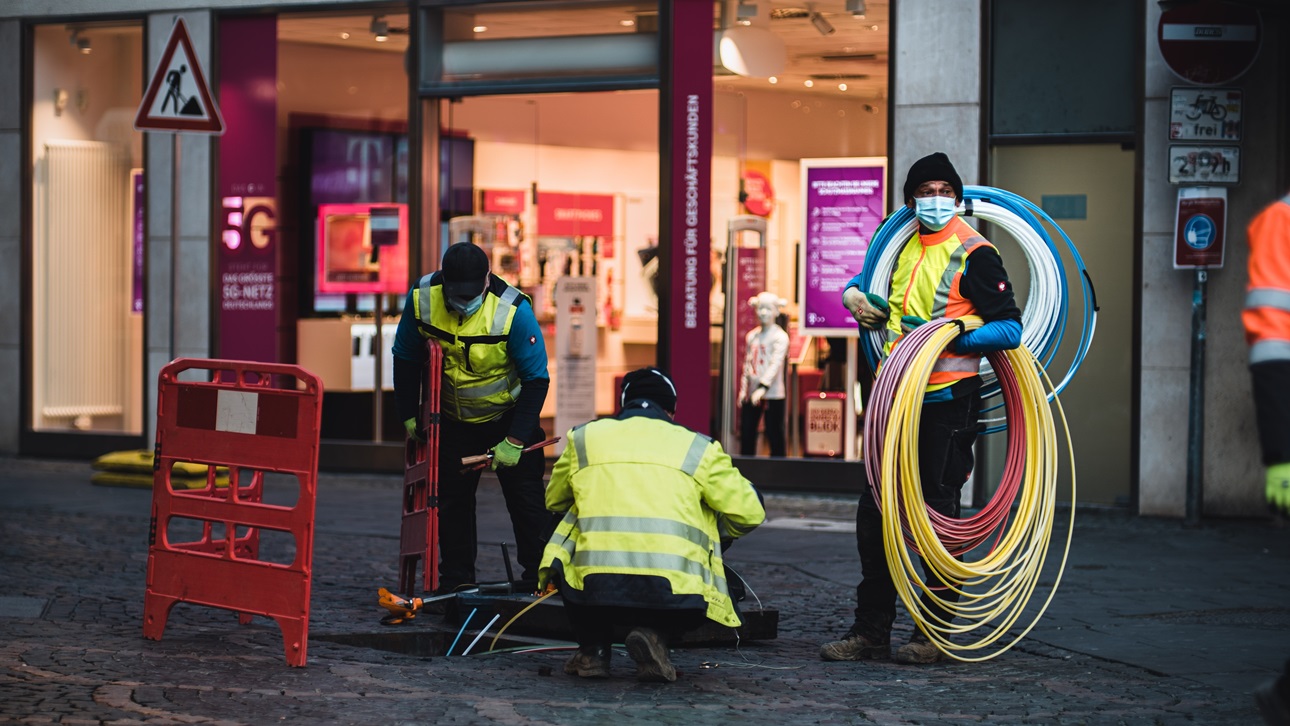Broadband and Real Estate

Understanding the Opportunity
We live in a world that is increasingly interconnected and digitalized. Even before the COVID-19 pandemic, the real estate and land use industry had felt the effects of connectivity and had taken advantage of it, from the increased interest in property technology—or proptech, the innovative use of technology in the real estate industry—to the rise of e-commerce affecting worldwide logistics and manufacturing markets. All this connectivity and digitalization relies on the speed, capacity, and reliability of our world’s internet infrastructure. However, with the onset of the global COVID-19 pandemic in 2020, internet infrastructure was brought to the forefront as a pressing need. The demands of large-scale work from home, school from home, accelerated e-commerce, telehealth, and even family gatherings pushed more of our lives online and exponentially increased demands on internet infrastructure to unprecedented levels and strained capacity in unanticipated ways. This demand also helped shift the real estate industry itself from thinking just in terms of physical space to also considering how to engage within a virtual environment.
As conversations about the future of working from home and other COVID adaptations continue, one thing has become abundantly clear: the need for increased bandwidth will only continue to accelerate. Moreover, for people to be full participants in a 21st-century society, both economically and socially, they will need modern digital connectivity. Unfortunately, like so many other aspects of society, access to this connectivity and its many benefits are often deeply uneven—both between urban and rural communities and between neighborhoods and zip codes within the same city—thus creating what is known as the digital divide.
The Broadband and Real Estate: Understanding the Opportunity report identifies challenges and the opportunities in addressing the digital divide, the tools and techniques available for both the real estate and land use industry, and the need for communities to expand and best take advantage of this connectivity.
Report Summary: We live in a world that is increasingly interconnected and digitalized. Even before the COVID-19 pandemic, the real estate and land use industry had felt the effects of connectivity and had taken advantage of it, from the increased interest in property technology—or proptech, the innovative use of technology in the real estate industry—to the rise of e-commerce affecting worldwide logistics and manufacturing markets. All this connectivity and digitalization relies on the speed, capacity, and reliability of our world’s internet infrastructure. However, with the onset of the global COVID-19 pandemic in 2020, internet infrastructure was brought to the forefront as a pressing need. The demands of large-scale work from home, school from home, accelerated e-commerce, telehealth, and even family gatherings pushed more of our lives online and exponentially increased demands on internet infrastructure to unprecedented levels and strained capacity in unanticipated ways. This demand also helped shift the real estate industry itself from thinking just in terms of physical space to also considering how to engage within a virtual environment.
As conversations about the future of working from home and other COVID adaptations continue, one thing has become abundantly clear: the need for increased bandwidth will only continue to accelerate. Moreover, for people to be full participants in a 21st-century society, both economically and socially, they will need modern digital connectivity. Unfortunately, like so many other aspects of society, access to this connectivity and its many benefits are often deeply uneven—both between urban and rural communities and between neighborhoods and zip codes within the same city—thus creating what is known as the digital divide.
The Broadband and Real Estate: Understanding the Opportunity report identifies challenges and the opportunities in addressing the digital divide, the tools and techniques available for both the real estate and land use industry, and the need for communities to expand and best take advantage of this connectivity.


